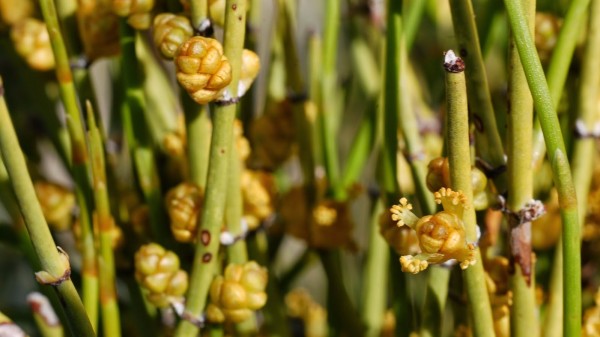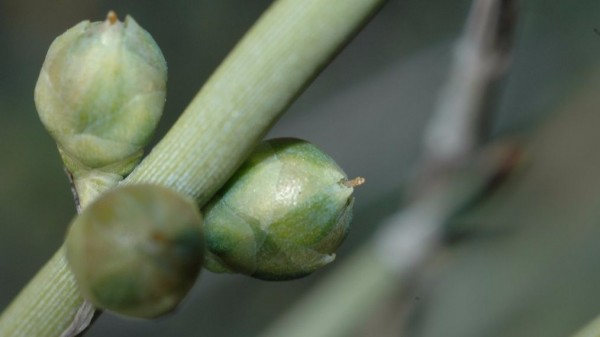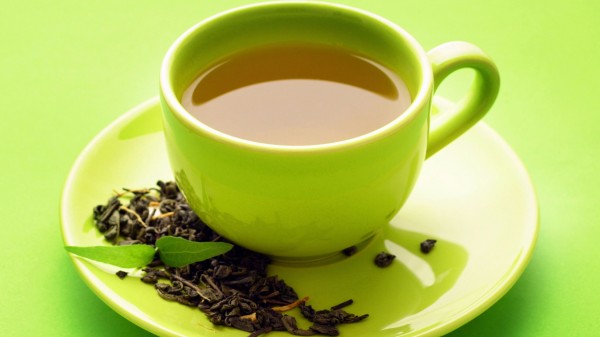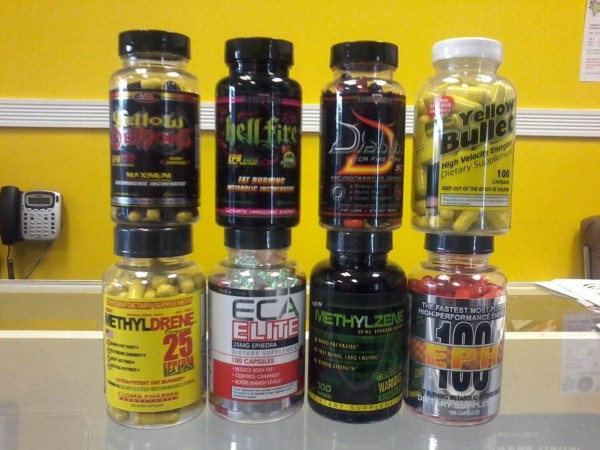Whether it be for work, for class, or just for the hell of it, everyone could use a little extra energy. You may be surprised to know that there are natural alternatives to caffeine pills–some that are less expensive and entirely vegan. One of which is ma huang, commonly referred to as ephedra. This article is here to educate you on the herb and give you a little insight on how it can help you out with your daily activities.
From Ancient Beginnings…
Ma huang is an incredibly old herb, given that it originated in ancient China. We know that ephedras have been used at least for 5000 years in China, probably elsewhere. Beverage made with the ephedra plant have been referred to under many names, e.g., yellow river, mormon tea, and whorehouse tea. Ancient Chinese physicians prescribed ephedra tea and pills for the common cold, coughs, asthma, headaches, and hay fever. Ephedra comforts asthma patients by acting as a bronchial dilator. Honey is often added to the ephedra.
… To Modern Times
Ten species of Ephedra are known to exist in North America, and many were popular in folk medicine and as a daily beverage. After the Mormons had arrived in Utah, the native tribe introduced them to a species of Ephedra, and they used the stems as a substitute for coffee and tea.

In the Old West, the same species used by the Mormons gained a reputation as a cure for syphilis and gonorrhea, although this cure was never actually proven to work.
Growing Ma Huang
Seeds for ma huang are planted in the early spring. During the first year of growth, the plants must be watered and kept entirely weed free. Stems are harvested usually after four years of plant growth, and during the blooming season, when alkaloid content is the highest. Ephedra sinica is not harvested during the summer months, because alkaloid content is reduced when stems are fully hydrated from summer rains.

Stems less than 1.25 cm in diameter are cut, dried in the sun for 15 days, and then artificially dried at 120 degrees F for three more hours. Afterwards, the stems are beaten with sticks to break their great jointing, and then screened to separate unwanted joints from the internodes. Packed in bags or covered in containers, the stems must be stored in a dry atmosphere.
A Cough and Cold Cure
Ma huang is great when you need a bit of a boost, but it also has a bunch of other uses. Ephedra, and the active alkaloid ephedrine, is ideal for treating a variety of lung, kidney, and eye ailments. It’s also great for killing a cold and cutting through mucus. That’s why it was such a popular ingredient in cold pills. Here’s a partial list of all of the things that ma huang has been used to treat.
- Cough with fever, headache, and severe chills
- Bronchitis and phlegm
- Nasal swelling due to allergies
- Whooping cough and asthma
- Renal cirrhosis and swelling due to kidney disease
- Colds accompanied by cough and swelling
- Conjunctivitis and inflammation of the tear ducts
- Arthritis with edema
Recent studies with both humans and laboratory animals have shown ephedrine to be beneficial in promoting weight loss. The main mechanism at work is its thermogenic ability to increase the metabolic rate of adipose tissue, enhancing the body’s ability to burn fat. Its weight reducing effects are greatest in those who have a slow metabolism.
Taking Ephedra
Ephedra can be used either as a tea or powdered and put into capsules. When prepared as a tea, old time herbalists and Mormon pioneers recommend that one use the “grounds” repeatedly — adding a teaspoon of the freshly dried herb on top of the herbal grounds left from previous days.

This method should be continued for at least four to six days since it takes several days of simmering this tea — 15 to 20 minutes a day — to sufficiently extract all the bio-available copper and other minerals. Naturally, more water and ephedra should be added to the tea each day.
Risks and Side Effects
As with a lot of other marketable stimulants, adverse side effects are not uncommon. The alkaloids of ma huang can cause rapid or irregular heartbeat, very similar to the effects of adrenaline. Blood pressure rises. Unfortunately, there have been reported cases of liver injury and hepatitis, and users experience aggressiveness, anxiety, and tremors.
Complications from these side effects can result in cerebral hemorrhage, cardiac arrest, and, of course, death. Prolonged use of the drug, which is not recommended, can be the cause of weakened adrenal glands, nervousness, and insomnia. Other side effects include nausea, vomiting, fever, depression, seizures, and headaches. It should be noted, however, that the low dosage of ephedrine in many ma huang products is not large enough to produce significant cardiovascular changes.

The United States Food and Drug Administration has described ephedra as an herb of “undefined safety.” But because ephedra plants are considered nutritional supplements, products containing ma huang are not regulated for safety. Again, alkaloid content varies so greatly from plant to plant (and between different ephedra species) that it is very difficult to monitor the safety level of each batch. Probably as a result of no monitoring and poor warnings, at least fifteen fatalities have been linked to supplements containing the active ingredient ephedrine.
Clandestine Uses
In 1993, ephedrine and pseudoephedrine were put on the list of the official regulated chemicals for the state of California. One major reason for this regulation was to help identify illicit drug labs by monitoring quantities and destinations of precursor chemicals. Ephedrine and pseudoephedrine are used as starting compounds, or “substitute precursors,” in the illicit manufacturing of methamphetamines.

Leave a Reply